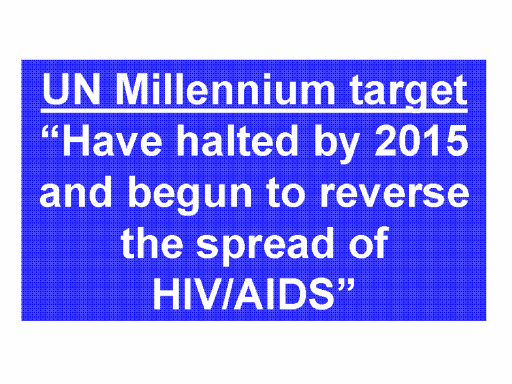| front |1 |2 |3 |4 |5 |6 |7 |8 |9 |10 |11 |12 |13 |14 |15 |16 |17 |18 |19 |20 |21 |22 |23 |24 |25 |26 |27 |28 |29 |30 |31 |32 |33 |review |
 |
One of
the UN Millennium Development Goals is to “halt and reverse the spread
of AIDS by 2015” but it is not clear what this means. Based on UNAIDS
estimates of decreasing HIV prevalence rates in SSA starting about the
new millennium, the annual HIV incidence rate had to have peaked in the
mid-1990s and HIV prevalence rates began to decrease around the year
2000. Thus, HIV transmission in SSA “turned the corner” about a decade
ago and if reversal of HIV transmission can be considered the same as
“reverse the spread of AIDS,” then this goal was met about a decade ago.
Does this
mean the AIDS pandemic is over - absolutely not! The TB pandemic may
have peaked a Century or more ago, but the annual toll of TB has
continued to keep this disease among the leading causes of global
deaths. For the AIDS pandemic it does mean that annual global HIV
incidence has peaked and HIV prevalence is now decreasing. Nevertheless,
in Africa and Asia, annual AIDS deaths will continue to be at least a
couple of million for several decades. In addition, annual HIV incidence
in those populations where significant epidemic HIV transmission has
occurred will continue to be unacceptably high. In SSA, at least 1 to 2
million new HIV infections can still be expected annually for at least
another decade or two.
|